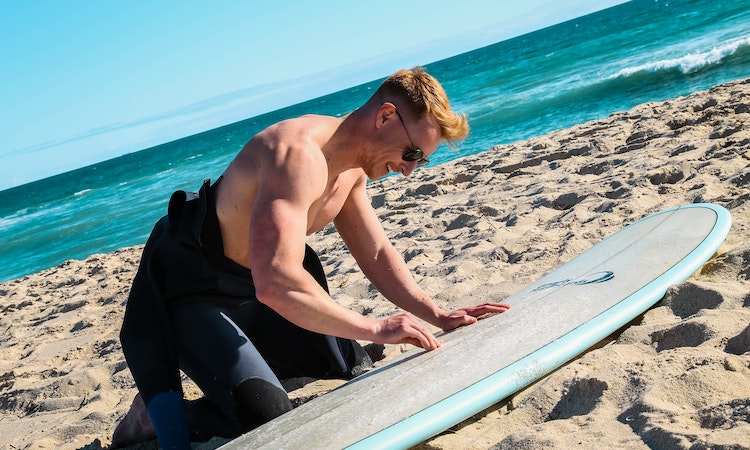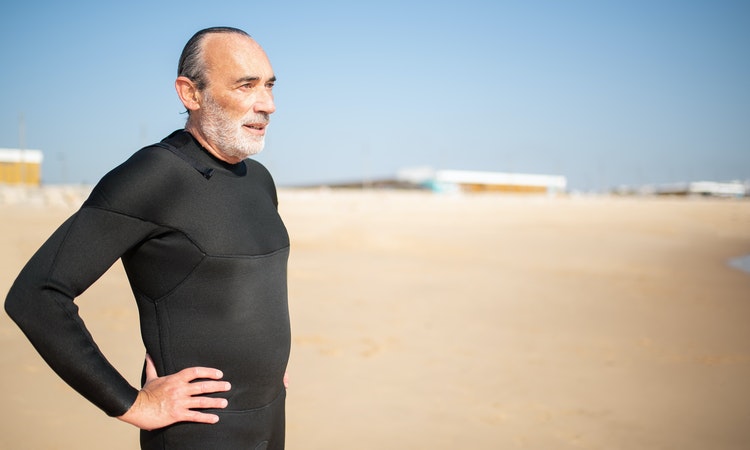While trying to master the art of surfing can be daunting, there are certain ways that make your journey easier. Have you ever seen surfers apply wax on their boards before hitting the waves? This may have got you wondering, why do you wax a surfboard?
You may wonder what advantage does this add and how does it benefit them. Keep reading to find out the answer to this age old question.
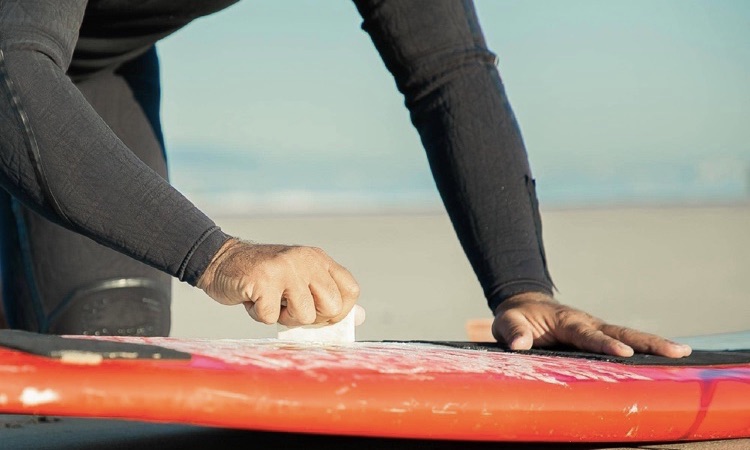
Why do you Put Wax on a Surfboard?
Most surfers wax their boards because the friction created by the wax between the board’s top and one’s feet helps them to stay firmly on the board as they ride a wave. Whilst also allowing for better paddle control when out in deeper waters.
If you want to experience the perfect ride, mastering how and when to apply surf wax is an indispensable technique. Applying a coat of wax has been an essential part of surfing for generations.
However, knowing which wax material works best for different temperatures and learning how to correctly apply the layer are crucial steps in making sure your board doesn’t slip away on those big swells.
Benefits of Using Wax on Surfboard
Not only will adding wax to your board protect it, but also improve your stability while in the water. Furthermore, if you’re just starting out with surfing, having a surfboard coated in wax is essential for achieving that grip on the surface of the waves.
As noted before, investing in quality surf wax is an ideal way to enhance your footing on the board. Not only will it ensure that you stay firmly planted while paddling out into the waves, but also offer enough traction for a secure grip as you carve and cut through them!
Be sure to swap out wax once every ten sessions. The sun’s rays can weaken the potency of your wax, so always store it in a cool and dry place when not in use.
Different Surfboard Waxes
Surfing without the right wax can be a disheartening experience, and it’s essential that you understand the differences between basecoat and topcoat wax for optimal performance.
Applying traditional or sticky surfboard wax to your board will make all of the difference when it comes to enhancing your surfing skills. Not only do these different types of waxes provide various advantages, but utilizing them together can take your rides to an entirely new level!
Basecoat Wax
Referred to as an undercoat wax, this layer is applied on the board before applying traditional surfboard wax. The basecoat helps keep the topcoat in position so it can serve its designated purpose.
Applying basecoat wax to your surfboard is essential for a variety of reasons. By introducing this type of wax onto the board, it creates small bumps across its entire surface that increases friction between it and the surfer’s feet. Therefore, you will have better control as you take on powerful waves!
Furthermore, the use of basecoat wax makes applying regular wax much simpler and helps it to better adhere to the board. Comprised of solidified wax, this type of coat is designed for warmer climates.
However, it doesn’t melt or change consistency in different temperatures like other compounds. Thanks to its extraordinary stability, you can benefit from long-lasting protection when using a basecoat over your surfboard.
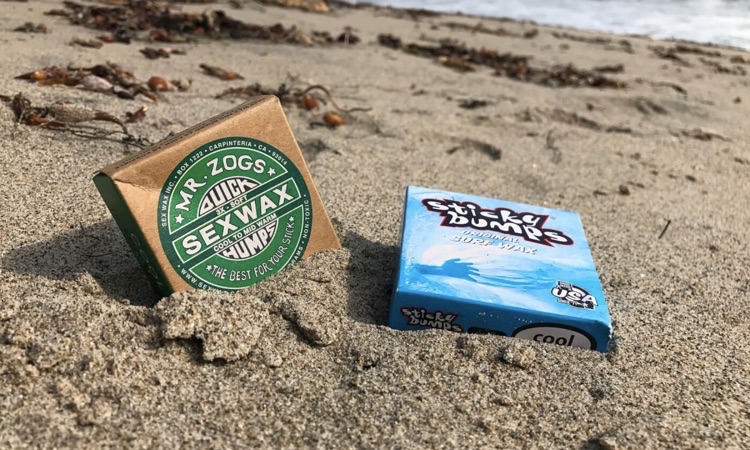
Traditional Wax
Combining the best of both worlds, these waxes are some of the most sought-after surf waxes out there. Unlike traditional varieties that require hours to settle in to give an optimal grip on your board, these provide immediate hold which is ideal for avid and beginner surfers alike. They work perfectly on top of a basecoat.
When to Wax Your Surfboard
Pay attention to the climate in your location when waxing your board. This has a major impact on how well the wax will adhere. To ensure proper application of the wax, consider applying during winter months when water is coldest or summertime when temperatures are highest.
Let your wax settle for at least a day after application to ensure it settles correctly on the board before taking it out in the water. Waiting is key and will enable you to get maximum performance from your surfboard when hitting those waves!
While it’s easy to forget, make sure you don’t procrastinate waxing your surfboard. If you’re a frequent surfer, aim for three or four times each year in order to maintain the best grip and traction on your board. Doing this will also reduce any risks of slipping off and getting hurt!
Temperature Range
When deciding on a wax to use while surfing, be sure to choose one that is tailored for the season and climate of your region.
If temperatures are warmer, then it’s imperative that you select a more temperature resistant wax. Otherwise, it will quickly melt once exposed to direct sunlight. Make sure you’re prepared with the right type of wax so that you can make the most out of your surf session!
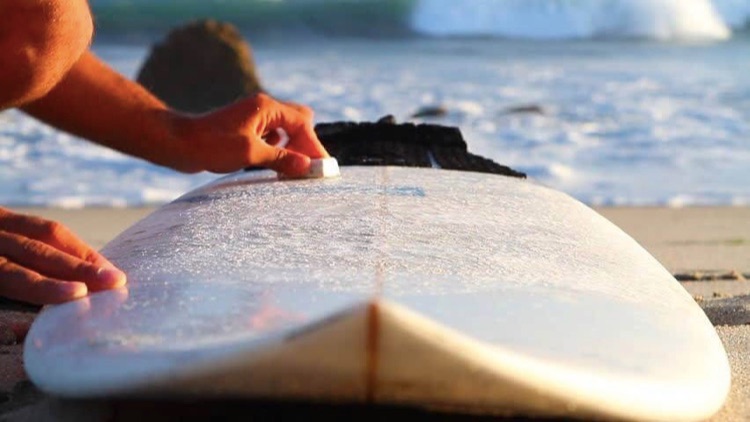
Disadvantages of Waxing your Surfboard
Be mindful when waxing your surfboard. Traditional petrochemical-based waxes can be damaging to both the environment and your health. Non-biodegradable, they may also cause adverse reactions in some cases. A better solution would be opting for organic wax instead, which is gentler yet just as effective.
If you don’t have a wetsuit and are riding a waxed board, be sure to protect your upper body with a rashguard! Old or residue wax on the surface of the board can harden as it dries out, leading to uncomfortable rashes. Thankfully, wearing a rashguard will provide adequate protection for you so that you’re able to go surfing again tomorrow pain-free.
To prevent a bumpy and irritating surface during your ride, never apply new wax on top of an old layer. Be aware that when renting boards from some companies, the previous coat is not removed.
Rash guards are highly recommended in these cases as skin rash can be very uncomfortable and hard to ignore. Especially if you come back into contact with salt water or laying down in bed afterwards.

